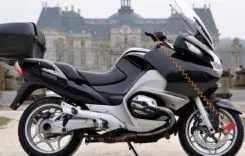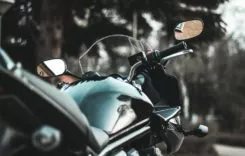Power Commander New LCD – First Look
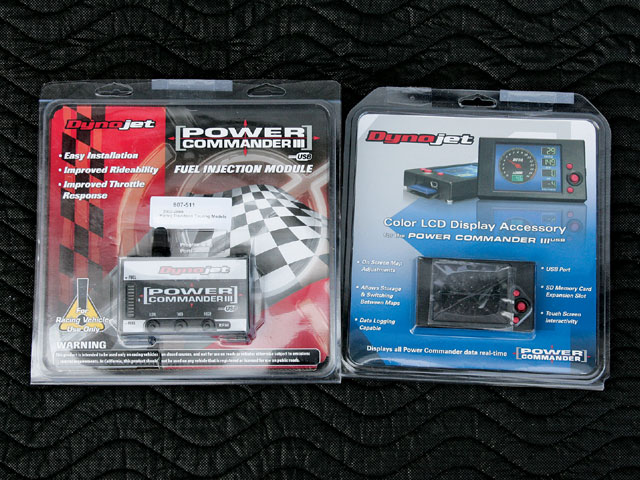
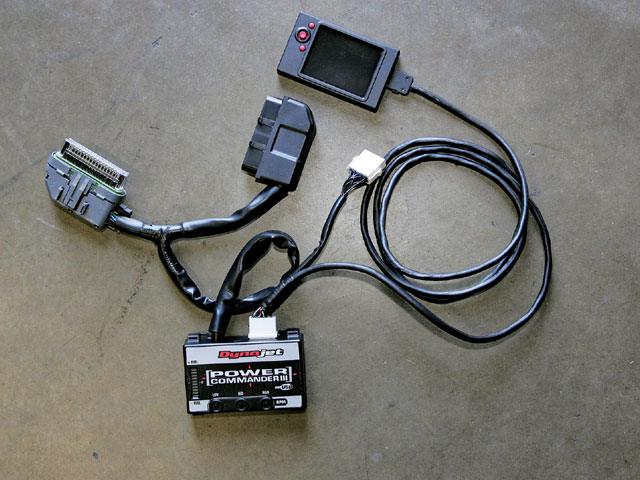
1. What a Power Commander does is find any power in the bike that may be hidden from the user due to stock factory fuel/air settings in the ECM. The Power Commander allows for fine tuning of the bike to get the ideal air/fuel ratio that will ensure that the engine can produce the maximum horsepower possible. The bike already has it; the Power Commander just help finds it. The rider will feel a large improvement while riding the motorcycle. It is possible that the peak wide-open throttle horsepower is unchanged, but with the correct air/fuel ratio the bike will run better by getting the added fuel usage. For the most part a Factory bike off the showroom floor is going to be under-tuned to keep the end user from blowing up the motor (i.e.) rev limiters due to warranty; they would rather you keep the bike’s powerband under control and at a safe setting.
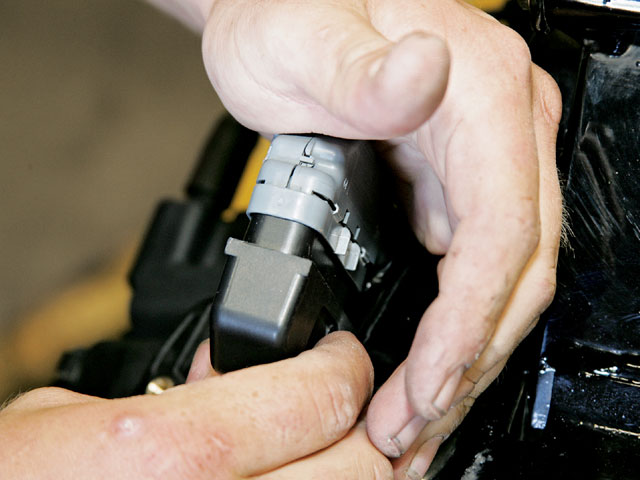
2. The Dynojet Power Commander plugs inline with your Harley’s stock fuel injection system (no cutting or splicing). It uses OEM-style connectors, making installation easy and quick. The PC allows a full range of fuel adjustment, as much as +/- 100 percent over stock.
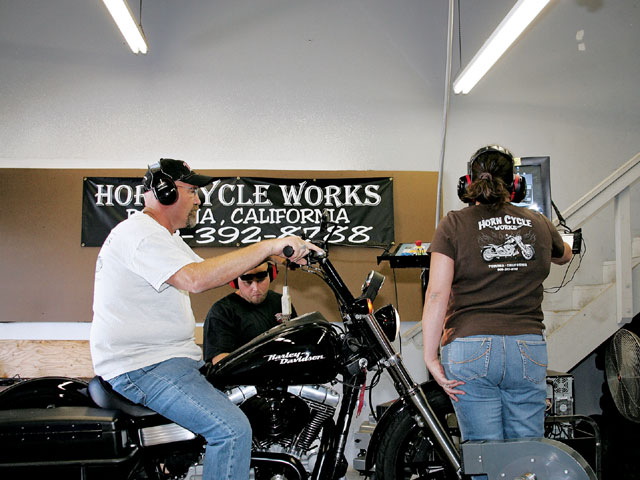
3. & 4. With a base map, adjustments can be made on the faceplate of the PC or on the bike with a dyno, or off the bike with a laptop. No permanent changes are made to the bike’s system. Once the unit is removed, the bike reverts to its stock settings. Dynojet supports the Power Commander product line with the world’s largest map database. For custom or specialty applications, there is a network of Official Dynojet Tuning Centers. These facilities have the required equipment and training to develop custom maps for the setup of your bike. Now that you know what it is, we want to show you what you can get for the PC to help get your bike to work and run at its best. Power Commander has come out with a touchscreen LCD unit.
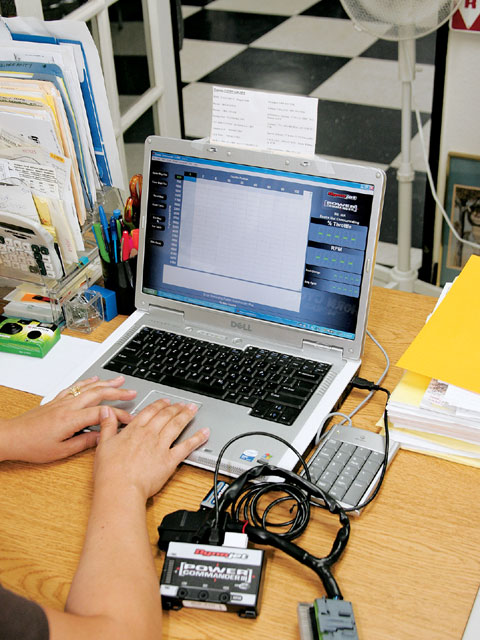
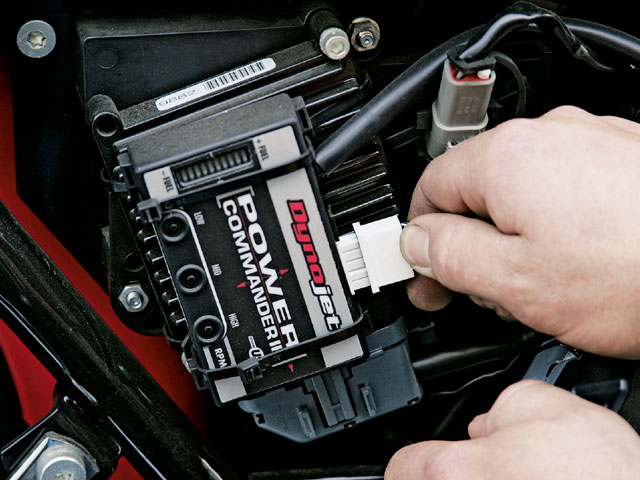
5. & 6. The LCD Display connects to any Power Commander USB via a “quick disconnect” cable. It is designed to remain on the bike and is weather resistant. While connected, the unit will display all available data from the Power Commander. When the optional Multi-Function Hub is installed, all of its data is available for viewing as well.Once the LCD is plugged into the Power Commander and the LCD is running in real-time, it’s like having a dyno in your lap as you ride.
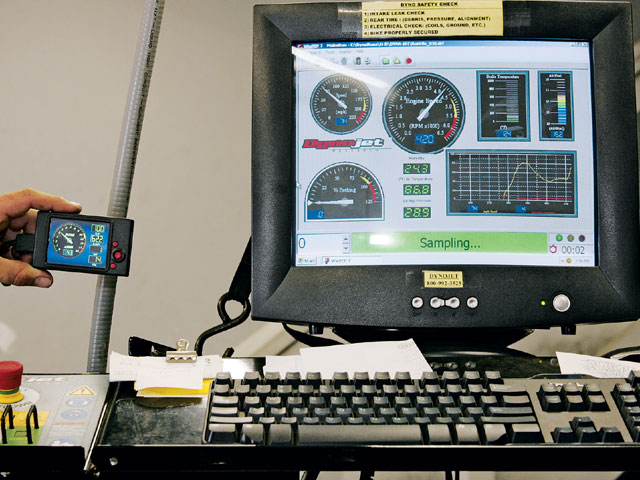
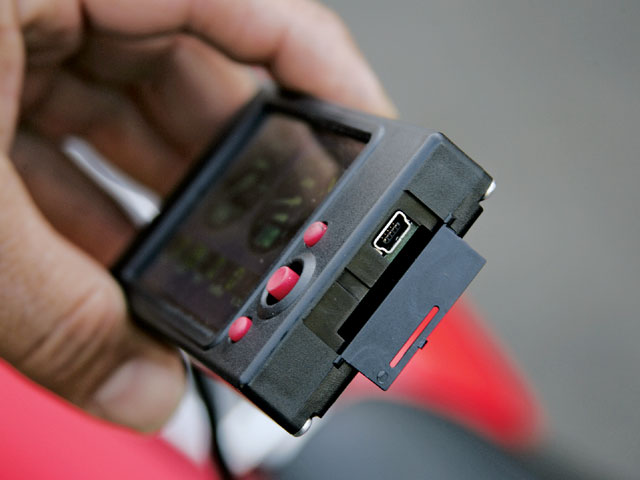
7. The LCD displays engine rpm (great for bikes without tachometer) as well as throttle position (great for knowing where adjustments need to be made). Multiple maps can be stored in the LCD (requires optional SD memory card); the user can store several map settings and change them “on the fly.” These could be setup for things like “fuel economy” vs “full power.” On a long trip the user can choose the fuel economy setting (at the expense of throttle response and power) and once at the intended destination can switch back to the full power mode. Also, as the timing is adjustable via the maps in the Power Commander, the user can have both high and low octane settings. This allows the use of lower quality fuels (if that is all that was available) without worrying about detonation. Additionally, maps can be adjusted using the controls on the display. The LCD Display has the ability to log the data being displayed for later analysis on the same SD memory card.
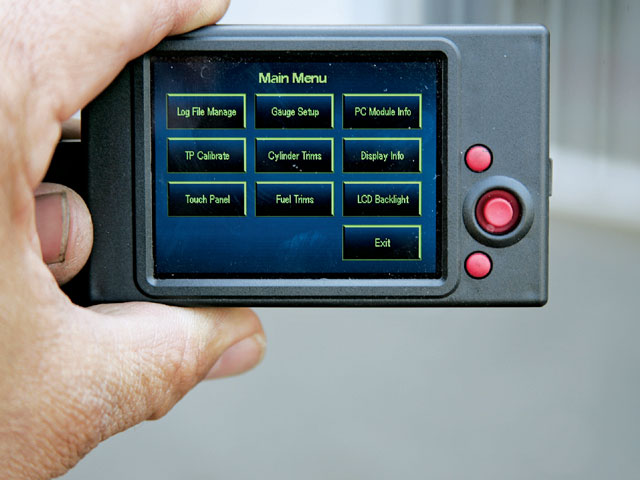
8. Starting from the Main Menu, the user can make the same type of adjustments normally done using the faceplate buttons on the LCD at startup with the touch screen panel while the bike is running. This is great for seeing if additional fuel in a certain area can increase throttle response or if leaning out the bike for improved fuel economy affects smoothness (all without a laptop computer). For shop use, a technician can use the LCD to load maps into customer bikes.
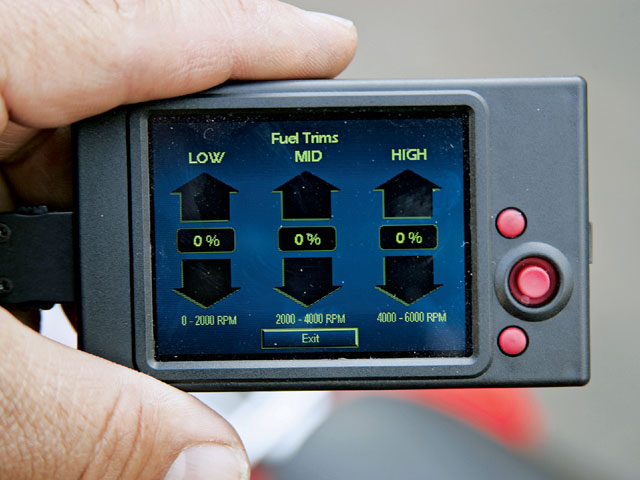
9. The throttle position calibration of the PC USB can be reset using the LCD along with the fuel trims through all rpm range (prior to this it could only be reset by using a computer).
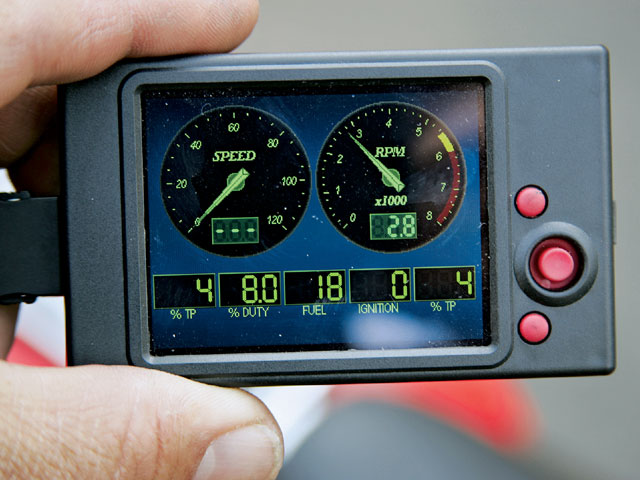
10. & 11. The LCD is also a data recorder (requires optional SD memory card) so the user can record things like rpm, throttle position, etc. to help with making map adjustments if no dyno is available. Data can be downloaded and played back on a computer. There are software updates that will allow the LCD to record and display 0-60 times as well as 1/4 mile times/speed (requires optional Dynojet Multi-Function Hub).
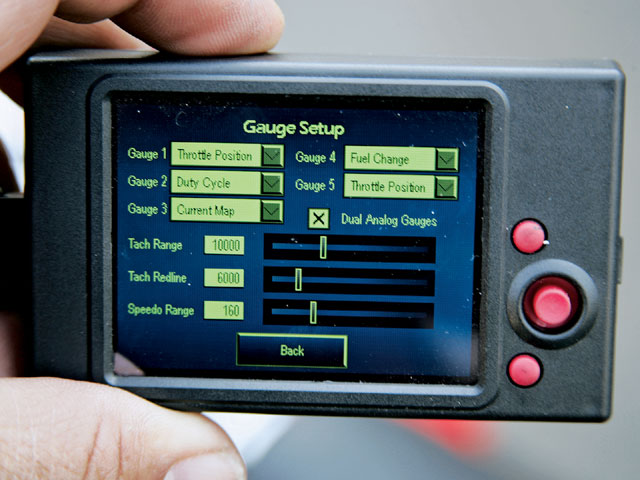
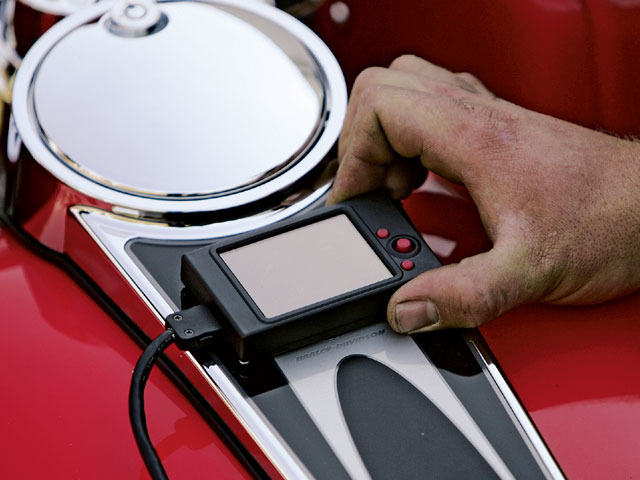
12. & 13. The LCD is designed to remain on the bike and is weather resistant. It can be mounted on the dash with the help of a small piece of hook & loop fastener, or it can be mounted on the handlebars with a bracket from Tech Mounts. http://www.techmounts.com
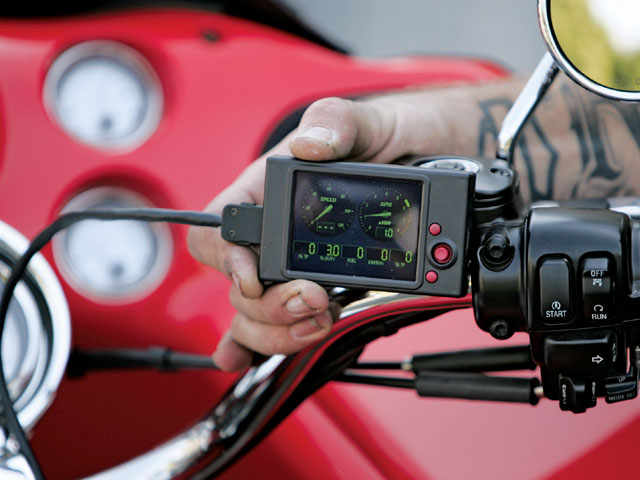
Here at Hot Bike, we strive to stay on top of the most innovative parts to hit the American V-Twin industry, so we’re bringing you a new tech piece entitled First Look. With this series, we will search out the newest parts and get you the inside scoop on what they are and how they work. Then we will follow up in a future issue by actually installing the part(s), explaining the install process, and giving an evaluation.
Let’s start with a quick overview of what a Power Commander (PC) is and how it works. Every time we go to Horn Cycles Works in Pomona, California, we hear someone ask “How much power can I get from a Power Commander if I install it in my bike?” This is the first thing we need to answer and explain.


